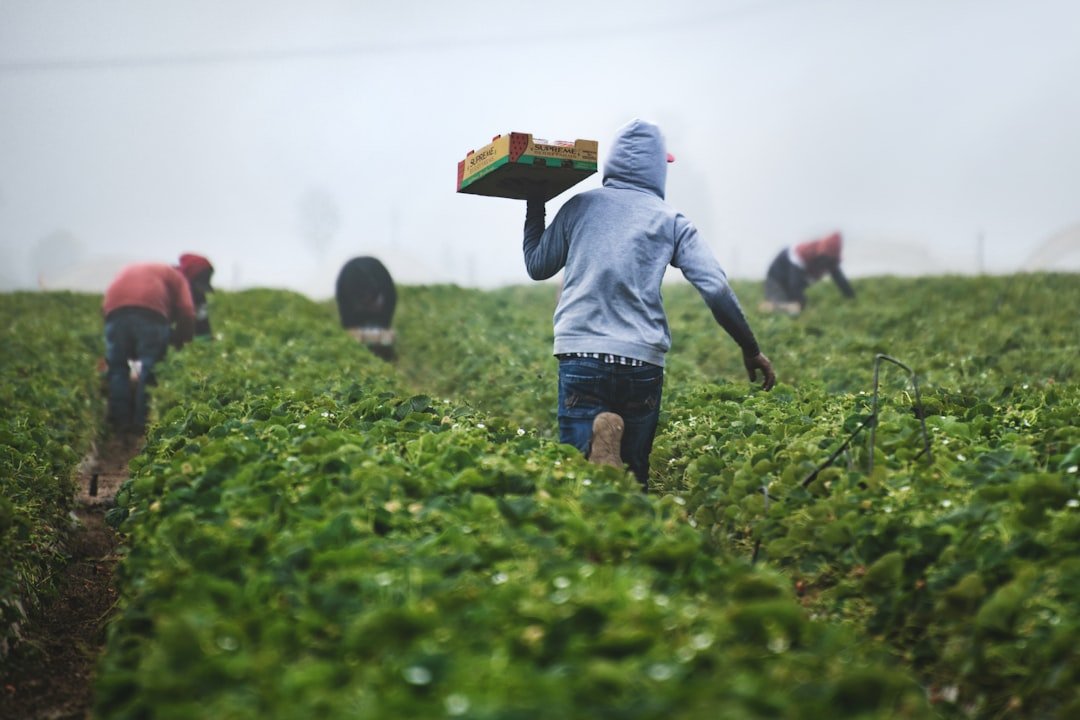Starting Your Own Deer Farm: A Beginner’s Guide

Deer farming is a growing industry that involves the breeding and raising of deer for various purposes, including meat, antlers, hides, and velvet. The industry has seen significant growth in recent years due to the increasing demand for deer products and the potential for high profits. Deer farming can be a lucrative business opportunity for individuals who are willing to invest the time and resources into building a successful operation.
Deer farming can be divided into two main categories: venison production and velvet antler production. Venison production involves raising deer for their meat, which is lean, low in fat, and high in protein, making it a popular choice for health-conscious consumers. Velvet antler production involves raising deer for their antlers, which are harvested and used in traditional medicine and dietary supplements. Both of these sectors offer unique opportunities for farmers to capitalize on the growing demand for deer products.
As with any livestock farming operation, deer farming requires a significant amount of knowledge, skill, and dedication to be successful. Farmers must have a thorough understanding of deer behavior, nutritional requirements, breeding techniques, and health management in order to ensure the well-being of their herd and the quality of their products. Additionally, farmers must comply with regulations and standards set by government agencies and industry organizations to ensure the ethical and sustainable management of their deer farm.
Researching and Planning Your Deer Farm
Before starting a deer farm, it is essential to conduct thorough research and develop a comprehensive plan to guide the establishment and operation of the farm. Research should include studying the market demand for deer products, understanding the legal and regulatory requirements for deer farming, and learning about best practices for deer management and husbandry. This research will help prospective deer farmers make informed decisions about the type of deer to raise, the size of the operation, and the potential revenue streams.
Planning a deer farm involves identifying suitable land for the farm, designing the infrastructure for housing and handling the deer, and developing a breeding and feeding program. Farmers must also consider the financial aspects of starting and running a deer farm, including initial investment costs, ongoing operational expenses, and potential revenue from selling deer products. A well-thought-out plan will help farmers set realistic goals, make informed decisions, and secure funding for their deer farming venture.
In addition to market research and farm planning, prospective deer farmers should also seek advice and guidance from experienced professionals in the industry. Networking with other deer farmers, joining industry associations, and attending workshops and conferences can provide valuable insights and support for individuals looking to enter the deer farming industry. By taking the time to research and plan their deer farm thoroughly, prospective farmers can increase their chances of success and avoid common pitfalls in the industry.
Creating a Business Plan for Your Deer Farm
A business plan is a crucial tool for any entrepreneur looking to start a new venture, including a deer farm. A well-crafted business plan serves as a roadmap for the farm’s development and operations, outlining the goals, strategies, and financial projections for the business. A comprehensive business plan should include an executive summary, a description of the farm and its products, market analysis, organizational structure, marketing and sales strategies, and financial projections.
The executive summary provides an overview of the business plan, highlighting the key points and objectives of the deer farm. The description of the farm should include details about the type of deer being raised, the size of the operation, and the products that will be produced and sold. Market analysis involves researching the demand for deer products, identifying target customers, and analyzing competitors in the industry. Understanding the market will help farmers develop effective marketing strategies and set realistic sales targets.
Organizational structure outlines the management team and staffing requirements for the deer farm, as well as any external advisors or consultants that will be involved in the business. Marketing and sales strategies should detail how the farm will promote its products, reach customers, and generate sales. Financial projections should include a detailed budget, revenue forecasts, and break-even analysis to demonstrate the farm’s potential profitability. A well-written business plan will not only serve as a guide for the farm’s operations but also as a tool for attracting investors and securing funding for the business.
Securing Funding and Investors for Your Deer Farm
| Metrics | Data |
|---|---|
| Number of Investors Contacted | 25 |
| Amount of Funding Secured | 500,000 |
| Investor Response Rate | 40% |
| Investor Meeting Conversion Rate | 20% |
| Time to Secure Funding | 6 months |
Securing funding for a deer farm can be a challenging task, especially for new entrants to the industry. However, there are several options available to prospective deer farmers to finance their operations, including personal savings, bank loans, government grants, and private investors. Before seeking funding, farmers should have a clear understanding of their financial needs and be prepared to present a compelling business plan that demonstrates the potential return on investment for prospective funders.
Personal savings can be used to finance some or all of the initial investment required to start a deer farm. However, many farmers may need additional capital to cover land acquisition, infrastructure development, and operational expenses. Bank loans are a common source of funding for agricultural businesses, offering competitive interest rates and flexible repayment terms. Farmers should prepare a detailed loan proposal that outlines their business plan, financial projections, and collateral to secure a loan from a bank or financial institution.
Government grants and subsidies are available to support agricultural businesses, including deer farms, through various programs aimed at promoting sustainable farming practices and rural development. Farmers should research available grants from federal, state, or local government agencies and prepare grant applications that align with their farm’s objectives and meet eligibility criteria. Private investors can also provide funding for deer farms in exchange for equity or a share of future profits. Farmers should network with potential investors and present their business plan to demonstrate the growth potential and profitability of their deer farming venture.
By exploring different funding options and presenting a well-prepared business plan, prospective deer farmers can increase their chances of securing funding and attracting investors to support their farm’s development.
Setting Up Your Deer Farm Infrastructure
Setting up the infrastructure for a deer farm is an essential step in establishing a successful operation that ensures the health and well-being of the herd. The infrastructure for a deer farm includes fencing, housing facilities, feeding systems, handling equipment, and other amenities necessary for managing the deer herd effectively. Farmers must carefully plan and design their farm infrastructure to meet regulatory requirements, provide a safe environment for the deer, and optimize operational efficiency.
Fencing is one of the most critical components of a deer farm’s infrastructure as it helps contain the herd within designated areas and protect them from predators. High-quality fencing materials should be used to construct secure perimeter fences that are tall enough to prevent deer from jumping over or escaping. Housing facilities for deer should provide shelter from extreme weather conditions and ample space for resting and movement. Farmers can choose from various housing options such as barns, sheds, or open-air pens based on their herd size and local climate.
Feeding systems should be designed to provide balanced nutrition for the deer herd throughout the year. Farmers must consider factors such as seasonal variations in food availability, dietary requirements for different age groups of deer, and methods for storing and distributing feed on the farm. Handling equipment such as chutes, gates, and corrals are essential for safely managing the deer herd during tasks such as feeding, breeding, health checks, and transportation.
In addition to basic infrastructure components, farmers should also consider other amenities such as water supply systems, waste management facilities, security measures, and emergency response protocols to ensure the overall safety and well-being of the deer herd on the farm.
Caring for and Managing Your Deer Herd

Caring for and managing a deer herd requires specialized knowledge of deer behavior, nutritional requirements, breeding techniques, health management practices, and regulatory compliance. Farmers must prioritize animal welfare while also maximizing productivity to ensure the long-term success of their deer farming operation. Proper care and management practices are essential for maintaining healthy deer herds that produce high-quality products for sale.
Feeding is one of the most critical aspects of caring for a deer herd as it directly impacts their health, growth rates, reproductive success, and product quality. Farmers must develop feeding programs that provide balanced nutrition based on factors such as age, sex, reproductive status, seasonal variations in food availability, and specific dietary requirements for venison or velvet antler production. Access to clean water is also essential for maintaining hydration and overall health in deer herds.
Breeding management involves selecting suitable breeding stock based on genetic traits such as body size, antler quality (for velvet antler production), meat quality (for venison production), reproductive performance, disease resistance, and temperament. Farmers must also implement breeding strategies such as natural mating or artificial insemination to optimize genetic diversity within the herd while preventing inbreeding.
Health management is crucial for preventing diseases and parasites that can impact the overall well-being of a deer herd. Farmers should work with veterinarians to develop vaccination programs, parasite control measures, disease monitoring protocols, and emergency response plans to address health issues promptly.
Regulatory compliance is another important aspect of managing a deer herd as farmers must adhere to laws related to animal welfare standards, record-keeping requirements, transportation regulations, food safety guidelines (for venison production), velvet antler harvesting protocols (for velvet antler production), and environmental stewardship practices.
By implementing effective care and management practices based on best industry standards and ethical principles, farmers can ensure the health and productivity of their deer herds while also meeting regulatory requirements.
Marketing and Selling Your Deer Products
Marketing and selling deer products require strategic planning to reach target customers effectively while also differentiating your products from competitors in the market. Whether selling venison meat or velvet antler products (or both), farmers must develop marketing strategies that highlight the unique qualities of their products while also meeting consumer demand for high-quality, ethically produced goods.
Market research is essential for understanding consumer preferences, identifying target markets (such as restaurants, specialty food stores, health supplement companies), analyzing competitors’ products (such as other venison producers or velvet antler suppliers), and determining pricing strategies that reflect product quality while remaining competitive in the market.
Branding plays a crucial role in marketing deer products as it helps create an identity for your farm’s products that resonates with consumers. Farmers should develop a brand story that communicates their farm’s values (such as sustainability practices or animal welfare standards), product attributes (such as lean venison meat or premium velvet antler), and unique selling points that differentiate their products from others in the market.
Sales channels can include direct-to-consumer sales through on-farm stores or farmers’ markets; wholesale distribution to restaurants or retailers; online sales through e-commerce platforms; or partnerships with food processors or health supplement manufacturers. Farmers should evaluate different sales channels based on factors such as market reach, profit margins, logistical considerations (such as transportation or storage), customer relationships (such as building loyalty or repeat purchases), and scalability for future growth.
Promotional activities such as advertising campaigns (both online and offline), participation in trade shows or industry events; social media marketing; influencer partnerships; or collaborations with chefs or health experts can help raise awareness about your farm’s products while also building brand recognition in the market.
By developing effective marketing strategies that align with consumer preferences while also highlighting your farm’s unique qualities and values; farmers can successfully promote their deer products while also building long-term relationships with customers in the market.
If you’re interested in starting a deer farm, you may want to check out this article on howtostart.digital for some helpful tips and advice. This article provides valuable information on the basics of starting a deer farm, including the necessary equipment, land requirements, and potential challenges. It’s a great resource for anyone considering getting into the deer farming business.
FAQs
What is a deer farm?
A deer farm is a facility where deer are raised for various purposes such as meat, antlers, and hides.
What are the different types of deer farms?
There are two main types of deer farms: breeding farms, which focus on breeding and raising deer for sale, and hunting ranches, which offer hunting opportunities for deer.
What are the steps to start a deer farm?
To start a deer farm, one should first research and understand the regulations and requirements for deer farming in their area. Then, they should secure suitable land, obtain necessary permits, and acquire deer from reputable sources. Proper fencing, feeding, and healthcare protocols should also be established.
What are the legal requirements for starting a deer farm?
The legal requirements for starting a deer farm vary by location, but typically include obtaining a deer farming license, meeting fencing and facility standards, and adhering to animal welfare regulations.
What are the potential challenges of starting a deer farm?
Challenges of starting a deer farm may include high start-up costs, the need for specialized knowledge and skills, and potential disease and predator management issues.
What are the potential benefits of starting a deer farm?
Potential benefits of starting a deer farm include the opportunity for a unique and rewarding business, the potential for high-quality meat and other deer products, and the potential for eco-tourism and hunting revenue.





